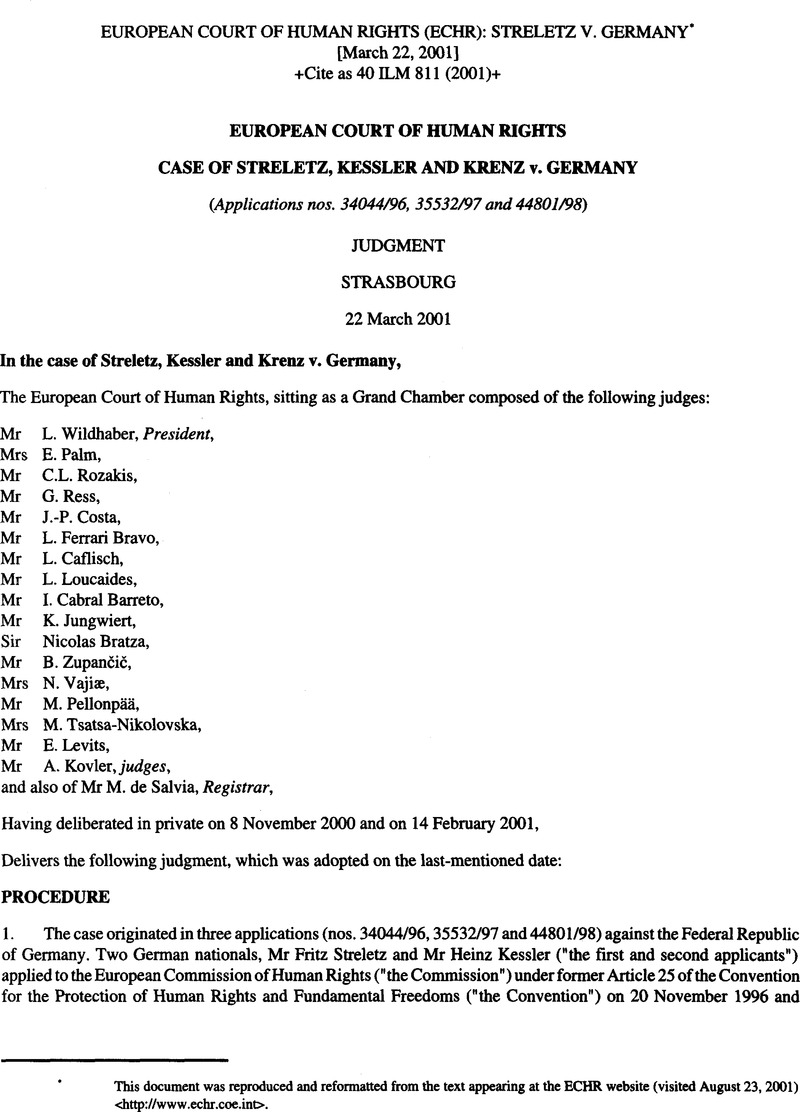No CrossRef data available.
Published online by Cambridge University Press: 18 May 2017

This document was reproduced and reformatted from the text appearing at the ECHR website (visited August 23, 2001) <http://www.echr.coe.int.>
1 Gustav Radbruch (1878-1949): German professor of law who considerably influenced the philosophy of law. Following the crimes of the Nazis, he formulated the principle, also known as “Radbruch's formula” (Radbruch'sche Formel), that positive law must be considered contrary to justice where the contradiction between statute law and justice is so intolerable that the former must give way to the latter.
1 See interalia Daillier, and Pellet, , “Droit international public”, 6th edition, p. 677.Google Scholar
2 See “Question of the punishment of war criminals and of persons who have committed crimes against humanity: Note by the Secretary General”, UN GAOR, 22nd sess., Annex Agenda Item 60, at 1, 6-7, UN DOC A/ 6813 (1967). See also ICTY, Tadic case IT-94-1, paragraph 623.
3 [1999] 2 weekly Law Reports p. 825 at pp. 909 et seq.
4 Tadic case op. cit.